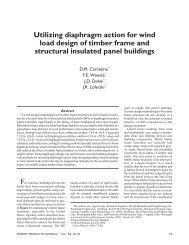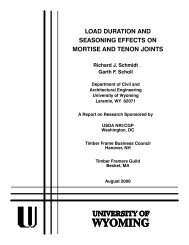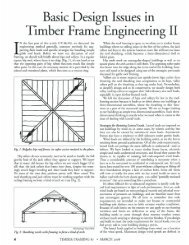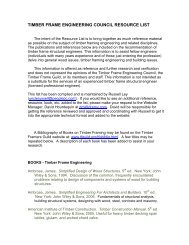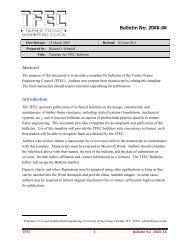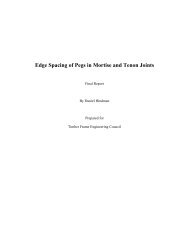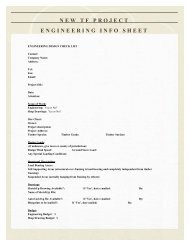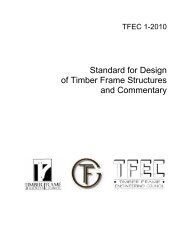Timber Frame Tension Joinery - Timber Frame Engineering Council
Timber Frame Tension Joinery - Timber Frame Engineering Council
Timber Frame Tension Joinery - Timber Frame Engineering Council
You also want an ePaper? Increase the reach of your titles
YUMPU automatically turns print PDFs into web optimized ePapers that Google loves.
single hinge in the peg, at the center of the tenon. In Mode III s the ends of the peg rotate<br />
through the side material and two hinges form, but this mode does not allow those two<br />
hinges to form at the same location (thus actually being one hinge) (see Figure 3-13).<br />
Mode III s is based on a single shear condition, where one end of the peg is held<br />
securely in the material of the main member. As the connection is loaded, the peg rotates<br />
through the side material and a hinge forms in the peg (see Figure 3-14).<br />
A mathematical model that properly reflects the strength of the peg and the<br />
surrounding material is necessary for Mode III s ’.<br />
Figure 3-13 Proposed Mode III s '<br />
Figure 3-14 Mode III s (Single<br />
Shear)<br />
27




